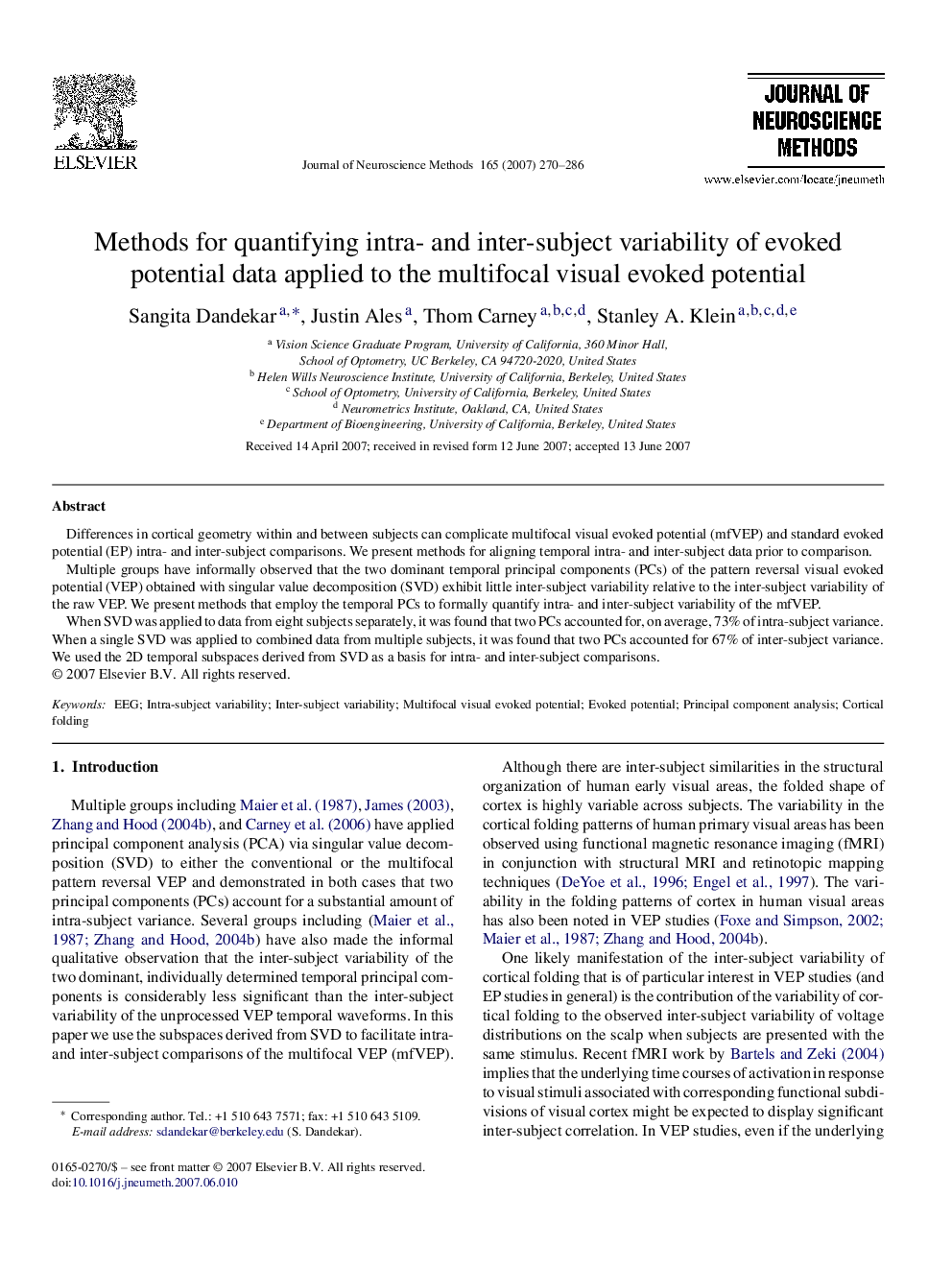| Article ID | Journal | Published Year | Pages | File Type |
|---|---|---|---|---|
| 4336456 | Journal of Neuroscience Methods | 2007 | 17 Pages |
Differences in cortical geometry within and between subjects can complicate multifocal visual evoked potential (mfVEP) and standard evoked potential (EP) intra- and inter-subject comparisons. We present methods for aligning temporal intra- and inter-subject data prior to comparison.Multiple groups have informally observed that the two dominant temporal principal components (PCs) of the pattern reversal visual evoked potential (VEP) obtained with singular value decomposition (SVD) exhibit little inter-subject variability relative to the inter-subject variability of the raw VEP. We present methods that employ the temporal PCs to formally quantify intra- and inter-subject variability of the mfVEP.When SVD was applied to data from eight subjects separately, it was found that two PCs accounted for, on average, 73% of intra-subject variance. When a single SVD was applied to combined data from multiple subjects, it was found that two PCs accounted for 67% of inter-subject variance. We used the 2D temporal subspaces derived from SVD as a basis for intra- and inter-subject comparisons.
